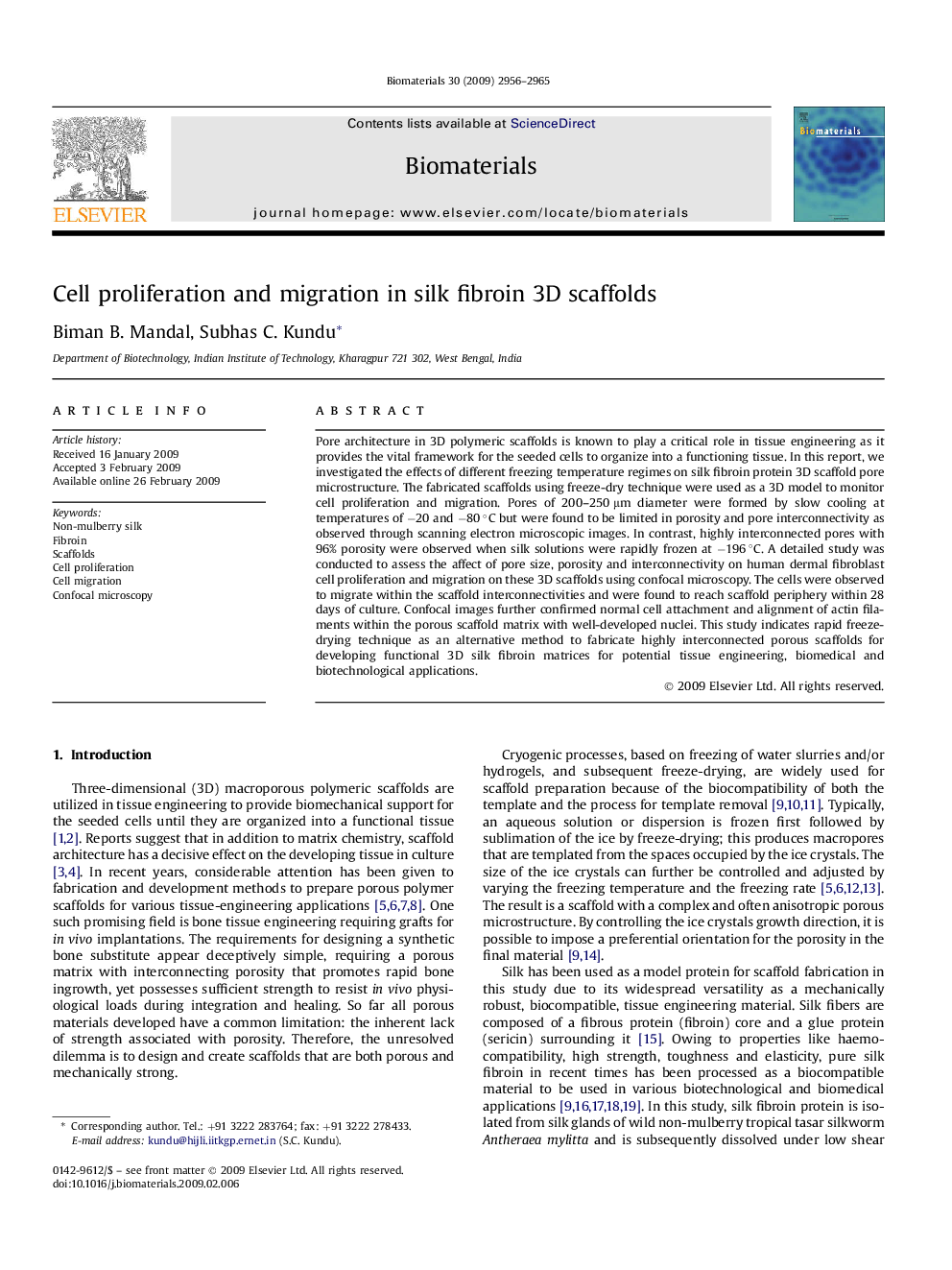| Article ID | Journal | Published Year | Pages | File Type |
|---|---|---|---|---|
| 10090 | Biomaterials | 2009 | 10 Pages |
Pore architecture in 3D polymeric scaffolds is known to play a critical role in tissue engineering as it provides the vital framework for the seeded cells to organize into a functioning tissue. In this report, we investigated the effects of different freezing temperature regimes on silk fibroin protein 3D scaffold pore microstructure. The fabricated scaffolds using freeze-dry technique were used as a 3D model to monitor cell proliferation and migration. Pores of 200–250 μm diameter were formed by slow cooling at temperatures of −20 and −80 °C but were found to be limited in porosity and pore interconnectivity as observed through scanning electron microscopic images. In contrast, highly interconnected pores with 96% porosity were observed when silk solutions were rapidly frozen at −196 °C. A detailed study was conducted to assess the affect of pore size, porosity and interconnectivity on human dermal fibroblast cell proliferation and migration on these 3D scaffolds using confocal microscopy. The cells were observed to migrate within the scaffold interconnectivities and were found to reach scaffold periphery within 28 days of culture. Confocal images further confirmed normal cell attachment and alignment of actin filaments within the porous scaffold matrix with well-developed nuclei. This study indicates rapid freeze-drying technique as an alternative method to fabricate highly interconnected porous scaffolds for developing functional 3D silk fibroin matrices for potential tissue engineering, biomedical and biotechnological applications.
